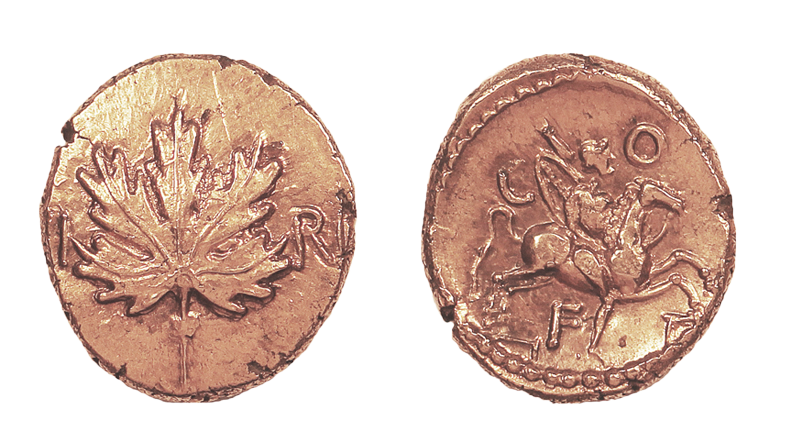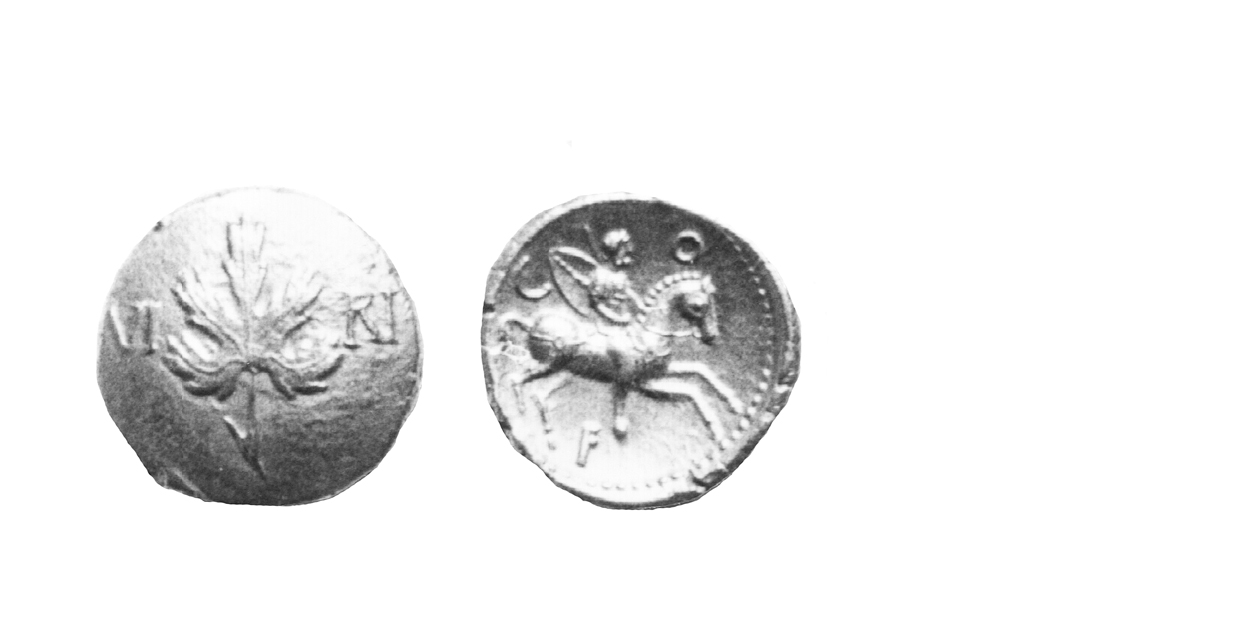
History
Later Coinages (Info)
Introduction 10 – 61 A.D.
At first, Cunobeline's accession sometime around 10 A.D. not only stabilized the situation north of the Thames, but also that of the entire south. Tincomarus and Dubnovellaunus-in-Kent had fled to the Continent, removing two potentially destabilizing elements from the picture (143). By 10 A.D., Eppillus disappeared and a new ruler came to the Atrebatic/Regnan/Belgic throne, one whose posture must have been defensive, and not a source of aggression. With no dangerous opponents to worry him, Cunobeline was able to consolidate his position.
Cunobeline evidently wanted more than stability because he soon extended his influence to Kent (74). The Cantian dynastic coinage was not reinstated after Eppillus disappeared. Cunobeline's coins circulated in Cantian territory instead. Later, the Atrebates/Regni/Belgae were subjected to Trinovantian/Catuvellaunian schemes. Epaticcus, who claimed to be the son of Tasciovanus, gradually replaced Verica. The encroaching opponent's coins first appeared in the northern part of Atrebatic/Regnan/Belgic territory about 35 AD. Eventually, Verica fled to the Continent. His downfall became the Roman excuse for intervention in Britain in 43 A.D.
With the Claudian invasion, coinage came to an abrupt end in the southeast. In the beginning, the territories of the Cantii, Trinovantes/Catuvellauni and Atrebates/Regni/Belgae were overrun by the Roman legions and tribal coinages ended. As the Romans moved westwards and northwards, the coinages of the peripheral tribes were halted one by one. The last tribe to strike coins was the Iceni, who had remained Roman allies until the revolt of Boudicca.
Next section – Later Coinages – North Thames Region

